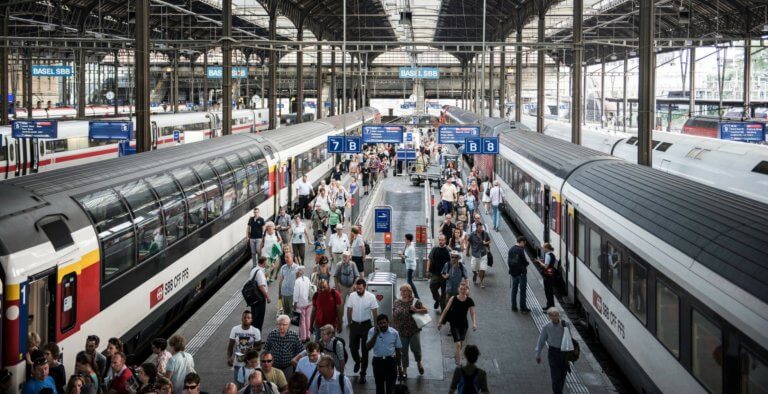By Kostas Tzanakakis, Senior Railway Expert, June 2019
When planning to establish a regulator for the railway sector, there may be a question: establish separate regulators for each transport sector or a multi-sector regulator for all transport sectors (rail, aviation, maritime)? This article tries to answer this dilemma.
Regulation implies controls on specific elements of business activity imposed by the government. When government regulates an infrastructure sector, direct and indirect controls are imposed on organizations’ choices or actions within that sector.
A regulatory system is described by a mixture of institutions, legislation, and procedures that give public control regarding operating and investment decisions over organizations who are providing infrastructure services.
It was estimated that between 1995 and 2005 nearly 200 new infrastructure regulators were formed around the world [1]. The fundamental rationale for establishing these new regulators was to establish institutions that would encourage and support clear and sustainable long-term economic and legal commitments by both governments and investors/stakeholders.
Several inter-related options exist for regulatory, institutional arrangements :
- Should economic and safety regulations be combined in a single body?
- Should rail have its own regulator or share a regulator with other sectors?
Combine economic and safety regulation?
Economic and safety / technical regulation can be carried out by a single body, or tasks can be shared by distinct bodies. Some countries have established distinct bodies, such as the United States, and Great Britain initially. Subsequently, Britain decided to combine safety and economic regulation, which would assist guarantee that safety regulation takes more account of the commercial consequences of decisions.
Single sector or multi-sector regulator?
The legislation establishing the rail regulator should take into consideration other regulators whose power may precede or whose mandate may overlap with that of the rail regulator. For example, would it make more sense for existing regulators to add rail regulation to their responsibilities? Alternatively, is a dedicated rail regulator a better option? This relates to the broader issue of whether a single rail regulator or a multi-sector regulator (MSR) should be responsible. Next, examples of Single and Multi-Sector Regulators (MSR) are presented [2].
- In the United States, economic regulation for railways is carried out by the independent“Surface Transportation Board” (STB), responsible for all surface transport modes; railway safety is regulated by the “Federal Railroad Administration” (FRA) within the “Department of Transportation”.
- Similarly, in Germany, an MSR, the “Federal Network Agency” (Bundesnetzagentur – BNA), monitors competition and ensures non-discriminatory access to infrastructure in all network industries, including railways; the Federal Railway Authority (Eisenbahnbundesamt – EBA) supervises and issues railway licenses.
- In Russia, there are two economic regulators (MSRs) for natural monopolies: the “Federal Service for Tariffs” (FST), which deals only with tariffs and the “Federal Anti-Monopoly Service” (FAS), which deals with broader competition and regulatory issues. A similar arrangement has been adopted in Kazakhstan.
- In other large European Union countries (Britain, France, Italy), economic regulators for rail are responsible only for the railway industry, but this is not the case in smaller European Union countries.
Few transitional or developing countries have sufficient resources to establish a single regulator for the rail sector, or even for the transport sector, so most developing countries have established rail regulation within multi-sector regulators (for example, in Tanzania, the “Surface and Marine Transport Regulatory Authority” (SUMATRA) regulates economic, safety, and environmental aspects for all transport sectors, except air).
Beneficial synergies can result when a single body regulates multiple sectors:
- Lessons learned from regulating one sector can be applied to other sectors.
- Specialist staff (e.g., lawyers) can be utilized across sectors, creating more effective and efficient regulation.
- Utility and transport sectors share the need to plan and finance long-term capital investment, to determine tariffs, and the need for licensing.
- An MSR should facilitate regulatory policy that is more consistent and transparent across sectors.
- An MSR may be less likely to succumb to “regulatory capture” than a single sector regulator, because an MSR has more status and authority, and works across multiple industries and Ministries.
MSRs have some potential disadvantages:
- Because of MSR power and influence, leaders can abuse their position.
- Specialist technical knowledge for individual sectors may be insufficient.
- A more extensive bureaucracy could delay decisions.
References
- Brown, “Handbook for Evaluating Infrastructure Regulatory Systems”, The World Bank / The International Bank for Reconstruction and Development, 2006.
- “World Bank Railway Reform: Toolkit for Improving Rail Performance”, The International Bank for Reconstruction and Development / The World Bank, 2011.
Kostas Tzanakakis
LinkedIn: kostas-tzanakakis
e-mail: [email protected]


